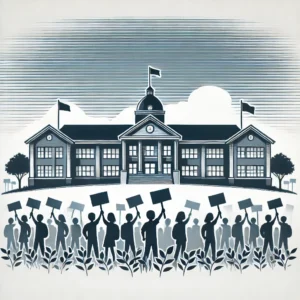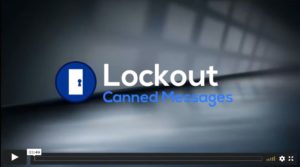In today’s complex social climate, school administrators may face situations where students organize protests with opposing viewpoints. Whether it’s a debate over geopolitical issues, such as the Israel-Hamas conflict, or a more localized topic, managing dueling protests requires a delicate balance between maintaining safety and upholding the constitutional rights of all students.
As school leaders, you are tasked with ensuring that students can express themselves freely while protecting them from potential conflicts. Here’s a guide on how to keep protests peaceful, maintain order, and protect the rights of all parties involved.
Establish Clear Boundaries and Zones
The first step in maintaining peace during dueling protests is to physically separate the groups. By designating specific areas for each group, you can prevent direct confrontations while allowing both sides to voice their opinions.
- Designated Areas: Assign separate, clearly marked spaces on campus for each protest group. Consider using barriers or other visual markers to delineate these zones.
- Buffer Zones: Establish neutral buffer zones between the groups, supervised by staff, to minimize direct interaction.
- Monitored Movement: Ensure controlled movement between areas. Security staff or school personnel should manage entrances, exits, and high-traffic areas to prevent groups from merging.
Prioritize Safety and Security
While the goal is to allow free expression, safety must remain the top priority. Ensuring a strong security presence without creating an environment of intimidation is key.
- Enhanced Security: Deploy school resource officers (SROs), security personnel, and possibly local law enforcement to oversee the event. These individuals should be well-briefed on their roles and trained in de-escalation tactics.
- Non-Escalatory Presence: Security should maintain a visible but non-confrontational presence. Their role is to prevent incidents, monitor for signs of escalation, and act only if the situation becomes unsafe.
- Emergency Plans: Prepare for various scenarios by having emergency plans in place. These should include clear evacuation routes and protocols for handling verbal confrontations or physical altercations.
Foster Open Communication and Supervision
Effective communication with both protest groups is critical to ensuring a peaceful demonstration. Setting clear expectations in advance can prevent misunderstandings and rule violations.
- Clear Guidelines: Communicate the rules of conduct to both groups before the protest begins. Make sure students understand the importance of safety and mutual respect, and clarify that disruptions to the school environment will result in consequences.
- Staff Supervision: Assign staff or faculty members to monitor each group, ensuring that students adhere to the guidelines and that any tensions are addressed promptly.
- Participant Accountability: Create a system for tracking which students are involved in each protest. This will help ensure that no unauthorized individuals, such as outsiders or agitators, join the demonstrations.
Protect Constitutional Rights
One of the most challenging aspects of managing opposing protests is balancing safety with the protection of free speech. Administrators must remain neutral while ensuring that all voices are heard.
- Neutral Stance: It is essential for school administration to remain neutral in facilitating the protests. Avoid showing favoritism toward one group or viewpoint, and ensure that both sides feel equally supported in their right to protest.
- Respect for Free Speech: While schools can regulate the time, place, and manner of protests, they must allow students to express their views. Speech that incites violence or harassment, however, should be addressed according to school policies.
Prevent Outside Agitation
Protests can sometimes attract outside individuals or groups who are not affiliated with the school. These outside agitators can escalate tensions and create dangerous situations.
- Monitor for Outsiders: Security should be on alert for any non-students attempting to join the protests. If outside agitators are identified, they should be instructed to leave immediately. If they refuse, law enforcement should be called.
- Quick Action: It’s important to handle these situations swiftly to prevent the introduction of external influences that could escalate the protest into a volatile situation.
Post-Protest Debrief and Reflection
Once the protests conclude, it’s crucial to follow up with students and staff. This helps to diffuse any lingering tension and provides a space for further discussion and learning.
- Debriefing Sessions: Hold post-protest debriefing sessions where students can reflect on the events in a structured, safe environment. This can help to process emotions and promote understanding between opposing viewpoints.
- Address Incidents: Review any incidents that occurred during the protests to determine what went well and what could be improved in future situations.
Conclusion: Balancing Safety and Rights in Schools
Duelling student protests present a unique challenge for school administrators, but with clear planning and a focus on communication, safety, and neutrality, these events can be managed effectively. By establishing boundaries, ensuring security, and respecting students’ constitutional rights, administrators can foster an environment where students feel empowered to express themselves—without compromising safety or the integrity of the school community.




